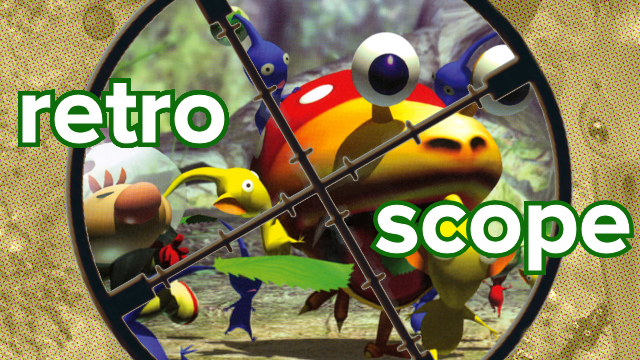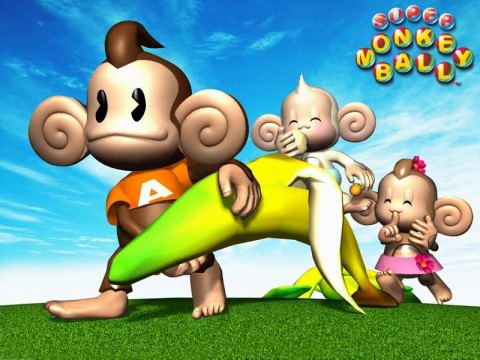
Despite being a self proclaimed Nintendo fan boy and owning nearly every Nintendo console since the inception of time, Virtual Boy included, I never played the original Pikmin upon its initial release. Would that I could say I had a legitimate excuse; perhaps a spontaneous coma that left me out of commission for the entirety of the fourth quarter of 2001, or a madcap body swapping incident a la Lindsey Lohan’s seminal 2003 classic Freaky Friday. The facts, however, are much more pedestrian. I was young, I was poor, and instead of wisely investing my surplus cash in Nintendo’s quirky strategy/puzzle/exploration hybrid, I purchased Super Monkey Ball. While I will readily admit that at the time I derived a certain level of pleasure from manipulating those monkeys and the balls in which they made their homes, the decision to forego a first party Nintendo franchise from the mind of none other than the great Miyamoto himself has haunted me to the present day.

You tempted me once Aiai… you shan’t tempt me again.
For twelve long years I persisted in my pitiful Pikminless state until on August 4, 2013; with the release of Pikmin 3 on Wii U I finally found the catalyst I needed to immerse myself in the world I had ignored for so long. In a year of uber violent and so called mature game releases such as BioShock Infinite and The Last of Us, Pikmin 3 was a breath of fresh air. Instead of wading through the same old sea of blood that I’ve become so accustomed to in modern games, I was able to take a breath and leisurely stroll through a gorgeous and immaculately crafted world the likes of which only Nintendo can execute.
Alas, the adventure was over far too quickly. I collected all of the fruits, found all of the secrets, and yet, much like a young Oliver Twist scraping the last dregs out of the bottom of his meager bowl of porridge, I found myself wanting more. Making use of a little time machine that I like to call eBay and a handy piece of plastic called a credit card I purchased the series’ freshman effort, flipped on my proprietary Nintendo WaveBird wireless controller, and settled in for a blast from the past.
It can at times be disappointing to return to an older game in a franchise after having played a more contemporary entry. The graphics are likely inferior, features that you might have taken for granted are missing, and often the sense of polish that the developer has been able to achieve by iterating upon the design and concepts with each new sequel is missing. Many of these statements hold true for Pikmin; it sports a control scheme that feels decidedly outdated when compared with the sequels (the inability to switch between Pikmin types on the fly being a notable flaw) and certainly isn’t as pretty as this year’s release, nor does it have the same level of variety in creatures and environments as Pikmin 3. The spirit of the franchise, that Nintendo magic, however, is definitely present.
From the moment that I, in the form of the game’s protagonist Captain Olimar, crash landed my Dolphin spacecraft upon the surface of the Pikmin home world and encountered the first member of the species that would proliferate rapidly into the vast and unconquerable hordes of my army I felt right at home. There is a pleasure to be derived from curating and nurturing an entire race of creatures that cannot be overstated. The game granted me the power of life and death over my tiny followers, and though I had it in my power to kill dozens of them in a single blow (perhaps by walking them nonchalantly into a vast body of water to drown, or by dropping an explosive bomb rock into the midst of their fragile numbers), I instead chose to protect them with a zeal that bordered on the paternal. I could not lose one of my little children to a wild Bulborb or a burrowing Snagret without feeling a pang of guilt. When vast numbers of them were gobbled up by the final boss I shed a tear.

Pikmin doesn’t contain a particularly cinematic or deep narrative. It is not intense nor does it have fast paced and over the top game play that will keep you on the edge of your seat. What it does have is heart. In every pixel and every puzzle is a sense of craftsmanship and artistry that was achieved by developers who are obviously experts in their craft and lovers of their work. Every moment that I spent with this game provided something that I have been hard pressed to find in many of the high profile AAA titles, namely, a sense of joy and childlike wonder.
If you are like me and have found yourself exhausted with twitch controls and quick time events, then do yourself a favor; dust off the old GameCube, clear some room on your memory card, and embark upon an adventure that, while perhaps not as fresh as the day it was created, is well worth your time and is more original than the bulk of mainstream titles on the market today.




 ShareThis
ShareThis






